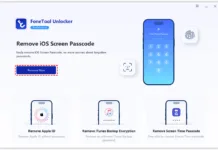Surely you have heard this expression many times: “Old errors have been fixed, new ones have been added.”
As a rule, bugfix reports are accompanied by this kind of joke.
The most interesting thing is that from a joke in this phrase — perhaps the wording. In all other respects, this is pure truth. Alas, the most thorough pre-release testing does not guarantee absolute detection and elimination of all errors without exception. The main task of quality assurance is to prevent an application with critical bugs from entering the market and thus protect the manufacturer from possible lawsuits and loss of reputation.
There is no coincidence that application software developers spend about a third of their time testing and debugging an interface, particularly working with the API. At the same time, about 80% of the development budget of any successful software is spent on fixing errors.
Considering the figures given above, the conversation about choosing the right QA strategy for a startup should start with an approach that ensures the initial avoidance of critical errors instead of planning costs for their subsequent elimination.
It is known that large QA companies offer different testing methods. The best approach, of course, is a combined method that unites elements of automated and manual testing. This is a highly effective but costly method. However, what should a startup that is just about to enter the market do and does not have sufficient funds to fully validate its product? Give up testing altogether? This is a guaranteed path to ruin. Hence, it is necessary to look for a balance of desires and possibilities. How to do it? Let’s figure it out together.
Manual testing — debunking myths
Apologists for the digital universe, led by Artificial Intelligence, categorically reject manual software testing services. Their arguments can be easily found on the vastness of the World Wide Web. They usually boil down to several theses:
- Manual testing is unreasonably expensive;
- The human factor is the main vulnerability and source of errors;
- The time taken for manual testing is too long, and the results are far from ideal.
Recall that we are considering the situation with a startup operating with a small budget and time limit. To begin with, just pay attention that any automated tests are planned and programmed by people, so talking about the complete exclusion of the human factor from the testing process is not without guile.
Thus, it turns out that in the case of automatic detection of an error, it is necessary to correct it and then run the whole process of the new programming and the next automatic search. It is hardly worth talking about how much the entire procedure is lengthened and how expensive it is.
Imagine that during manual testing, an experienced technician discovers a bottleneck in the code that is not yet critical but may lead to an error in the long run. What is he doing? That’s right, he fixes the potential cause of the crash. What does the machine do? Quite right, it skips this place since it was programmed for a specific task.
We talked about how important it is at the start to correct specific errors and, if possible, to exclude conditions for their occurrence in the future. This is just the case.
In other words, finally, we come to the question of usability testing cost and the economic and financial feasibility of choosing one or another type of testing for a startup.
Point-by-point strategy
So, we found out that in some cases (especially when it comes to startups), manual testing at the start can remove many problems in conditions of time and financial constraints. So it’s time to consider the types of manual testing.
It is essential to make a reservation: if you do not have your own success story in the field of QA, you should not rely solely on your own strengths, preparing the product for release to the market. Outsourced QA testing will provide you with a balance between reasonable costs and guaranteed quality.
Another important note. On a stable system, you cannot do without automated testing – it will save both time and money. However, since manual testing allows you to thoroughly test any application at the start, it will be the best solution for you.
So, here is a list of tests that can be done manually.
- Interface testing (including layout for websites and web applications).
- Working with JavaScript enabled and disabled.
- The presence of errors 404, 503, etc.
- Ad-hock testing — checking for both intuitive clarity of the interface and for “foolproof.”
- UX Testing.
- Performance and scaling tests.
- Black box and White box
A couple of words for the end
As you can see, manual testing can cover all aspects of the use of any application before it is released to the market. Thus, determining the set of tests explicitly required for your software as much as the optimal financial plan is a topic for a constructive conversation with experienced experts from a reliable company that provides manual software testing service. The main thing is to know what you want to get and how much you are ready to pay for the result.





